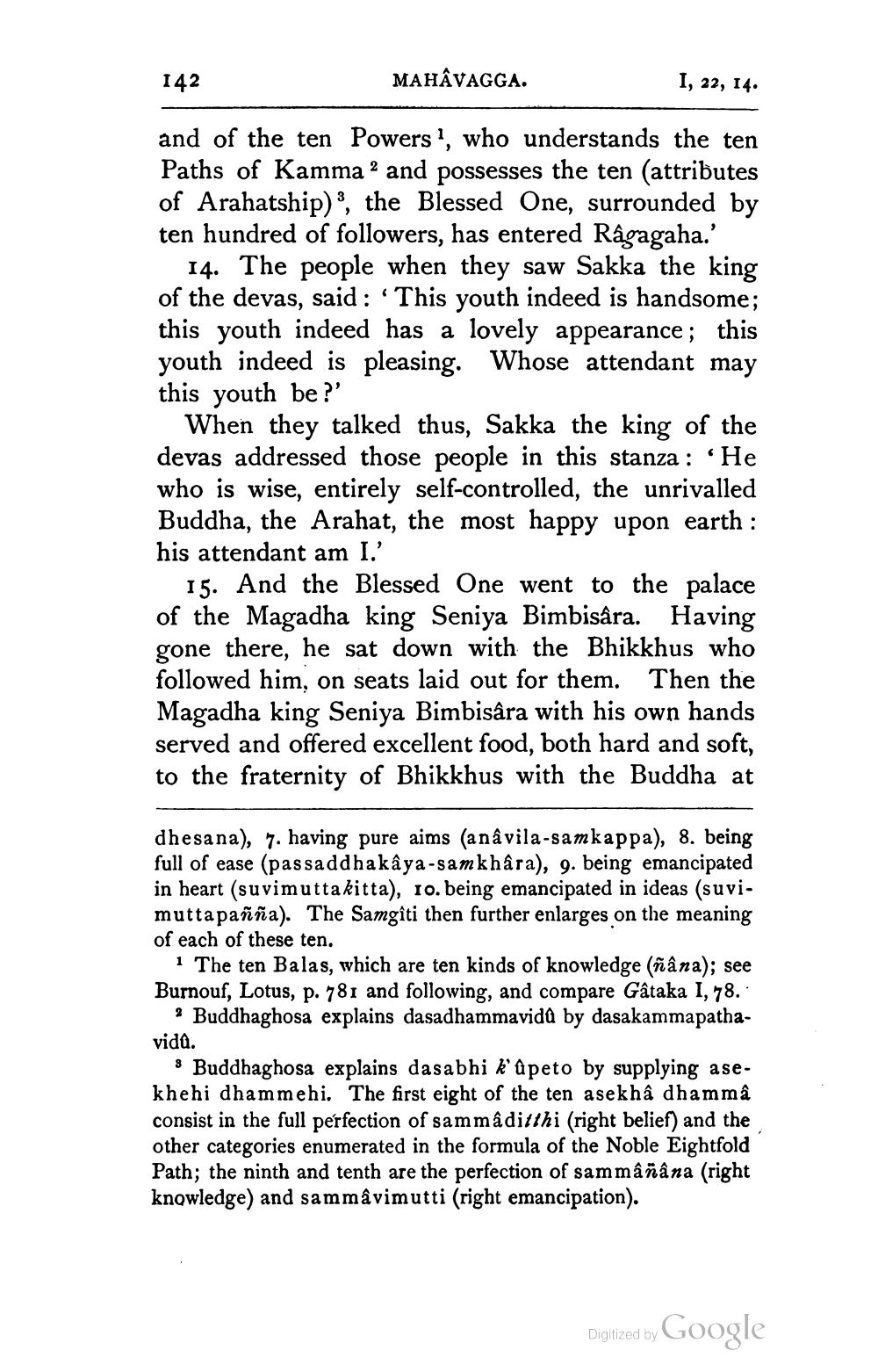________________
142
MAHÂVAGGA.
1, 22, 14.
and of the ten Powers', who understands the ten Paths of Kamma 2 and possesses the ten (attributes of Arahatship) 3, the Blessed One, surrounded by ten hundred of followers, has entered Râgagaha.'
14. The people when they saw Sakka the king of the devas, said: 'This youth indeed is handsome; this youth indeed has a lovely appearance; this youth indeed is pleasing. Whose attendant may this youth be?'
When they talked thus, Sakka the king of the devas addressed those people in this stanza : 'He who is wise, entirely self-controlled, the unrivalled Buddha, the Arahat, the most happy upon earth : his attendant am I.
15. And the Blessed One went to the palace of the Magadha king Seniya Bimbisâra. Having gone there, he sat down with the Bhikkhus who followed him, on seats laid out for them. Then the Magadha king Seniya Bimbisâra with his own hands served and offered excellent food, both hard and soft, to the fraternity of Bhikkhus with the Buddha at
dhesana), 7. having pure aims (anâvila-samkappa), 8. being full of ease (passaddhakaya-samkhâra), 9. being emancipated in heart (suvimutta kitta), 10. being emancipated in ideas (suvimuttapañña). The Samgîti then further enlarges on the meaning of each of these ten.
1 The ten Balas, which are ten kinds of knowledge (ñâna); see Burnouf, Lotus, p. 781 and following, and compare Gâtaka I, 78.
9 Buddhaghosa explains dasadhammavidd by dasakammapathavidū.
8 Buddhaghosa explains dasabhi k'ûpeto by supplying asekhehi dhammehi. The first eight of the ten asekha dhamma consist in the full perfection of samma ditthi (right belief) and the other categories enumerated in the formula of the Noble Eightfold Path; the ninth and tenth are the perfection of sammâ ñâna (right knowledge and sammavimutti (right emancipation).
Digitized by Google




